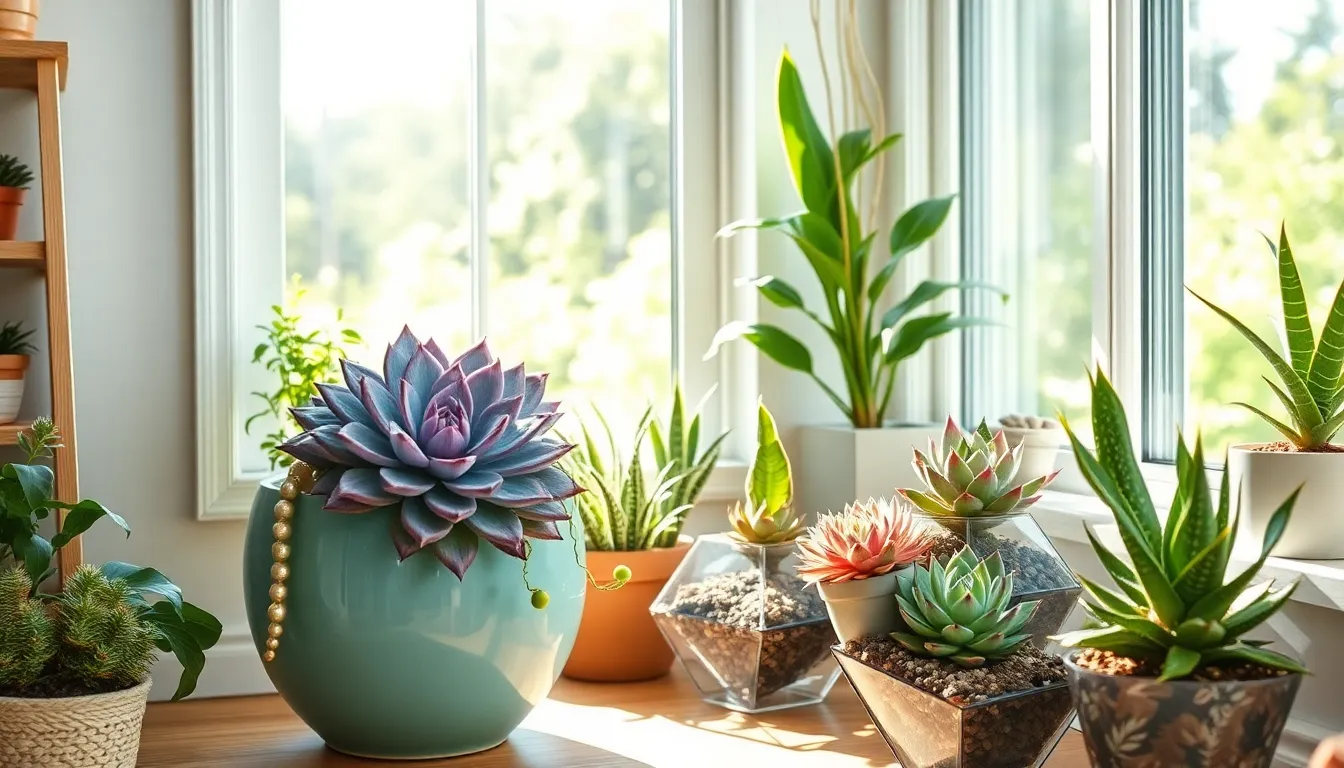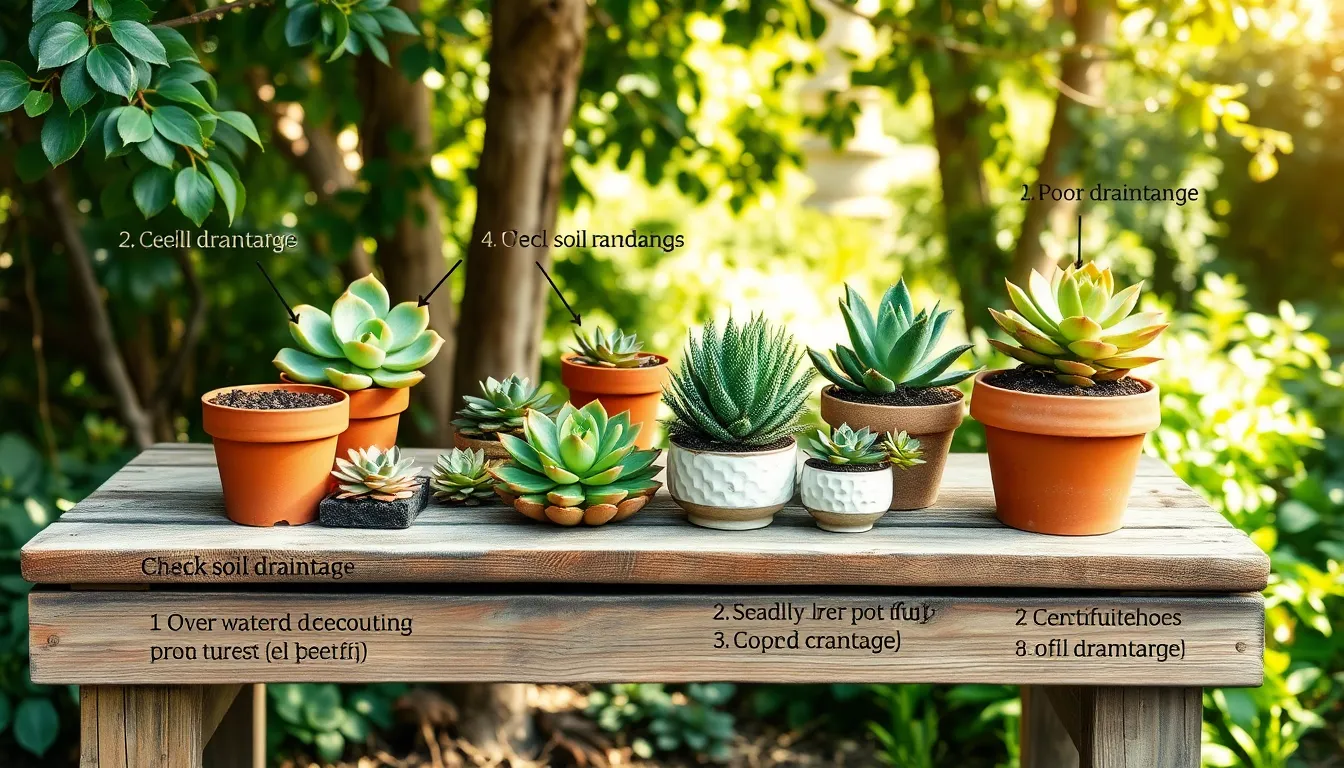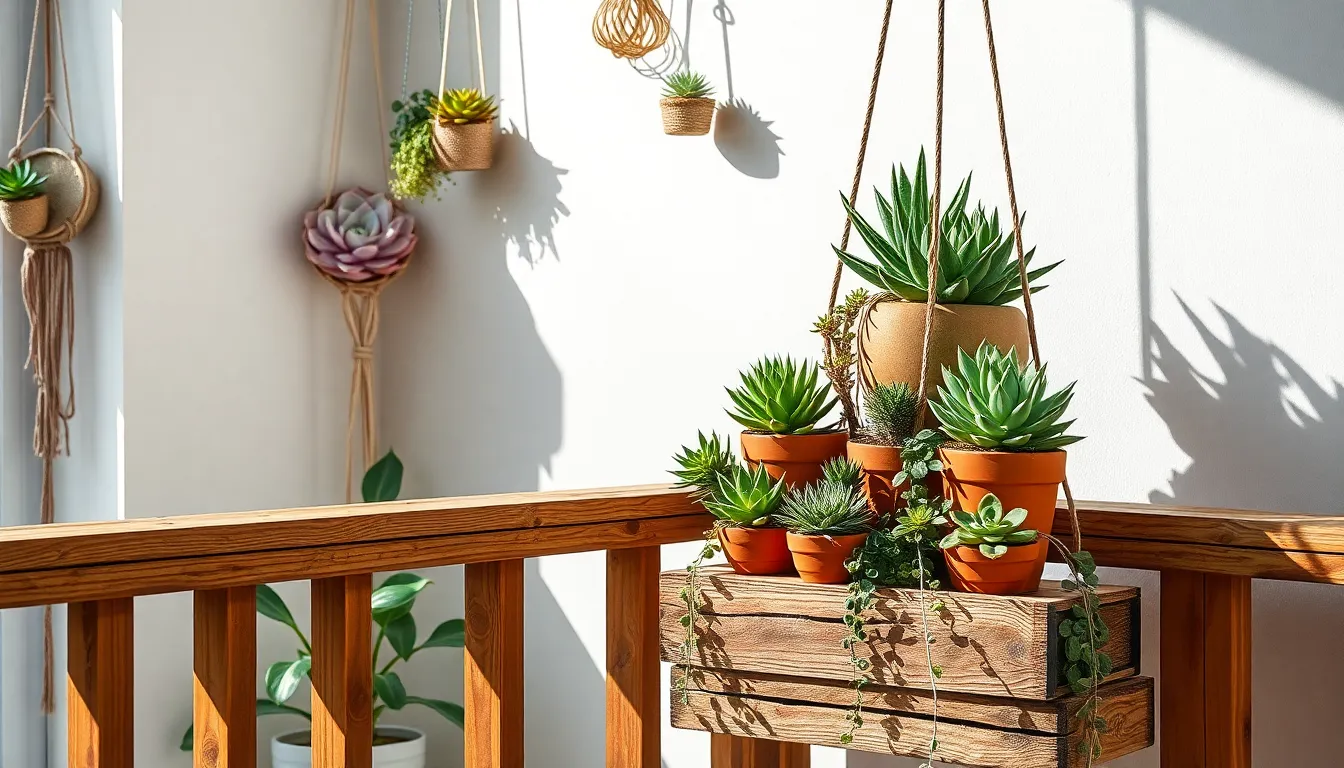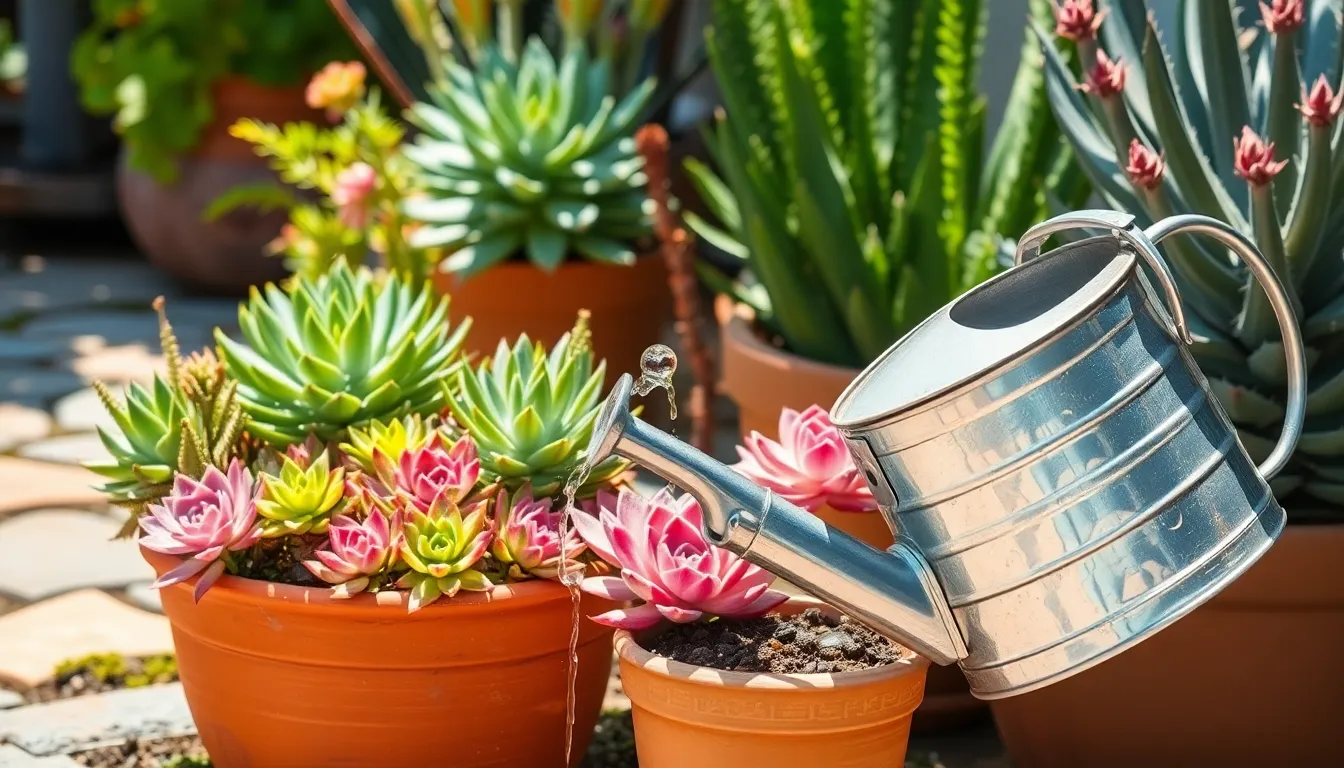Welcome to the vibrant world of succulents, where both beginner and seasoned gardeners can find joy and satisfaction in cultivating these resilient beauties. With their unique forms and colors, succulents transform any space into a lush, living masterpiece, inviting you to explore the wonders of nature right at home.
In “12 Beautiful Succulent Varieties to Grow at Home,” we’ve curated a selection that promises diversity and delight, ensuring your gardening journey is as rewarding as it is beautiful. Each variety offers practical benefits, from low-maintenance care to the ability to thrive in various environments, making them perfect companions for any gardener.
Whether you’re starting your first succulent collection or expanding an established array, this guide is your key to success and creativity. With our expert tips and insights, you’ll gain the confidence to nurture these stunning plants, turning your gardening dreams into reality.
Introduction to Succulent Beauty
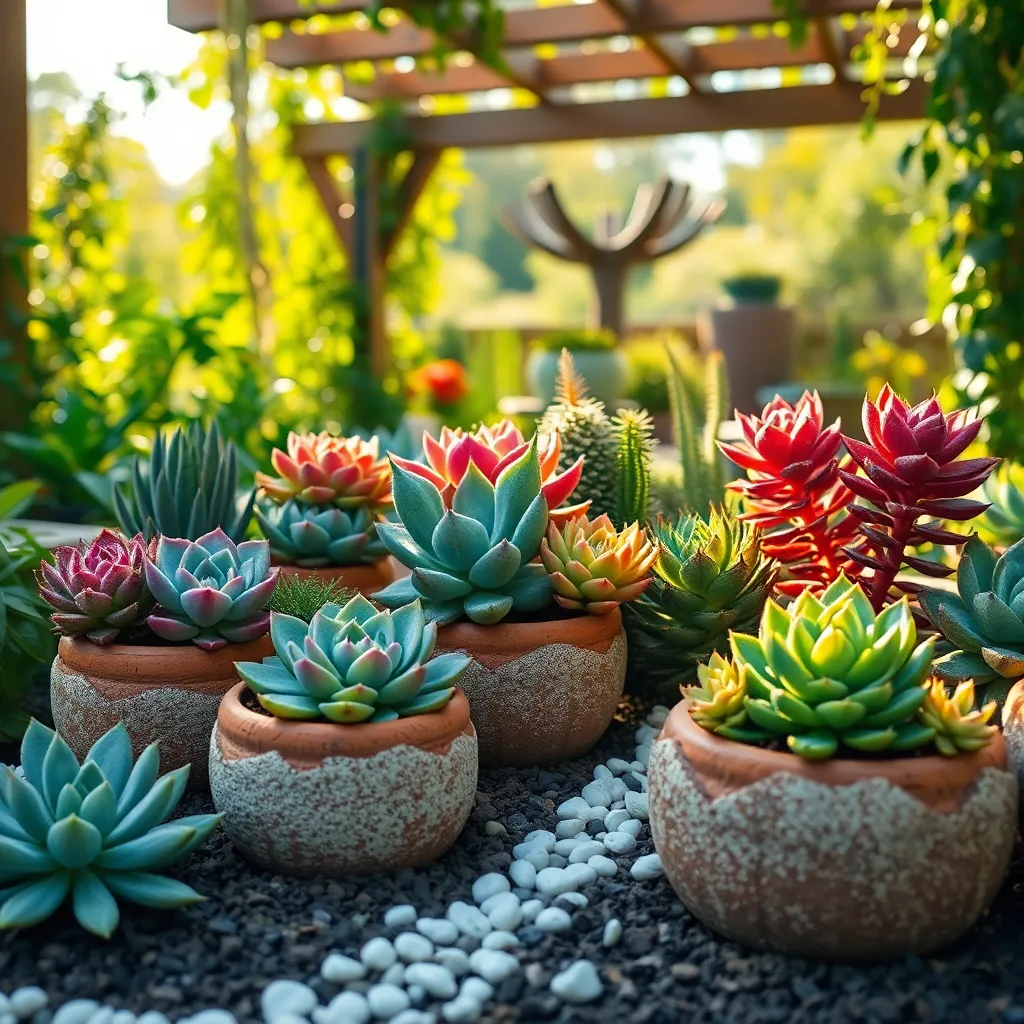
Succulents have captured the hearts of gardeners for their stunning array of colors and shapes. With their ability to store water in their leaves, they are perfect for those new to plant care or those with busy lifestyles.
To successfully grow succulents at home, it’s crucial to provide them with the right soil. A well-draining cactus or succulent mix is ideal, as it prevents root rot by allowing excess water to escape.
When it comes to watering, less is more with these plants. Allow the soil to dry out completely between waterings, typically every 10-14 days depending on your home’s humidity and temperature.
Lighting is another key aspect of succulent care. Most succulents thrive in bright, indirect light, so placing them near a south or east-facing window can work wonders for their growth.
For those ready to take their succulent care to the next level, consider propagating your plants. Simply take a healthy leaf cutting, let it callous over for a couple of days, and then place it on top of soil for new roots to form.
Aloe Vera: Healing and Hardy
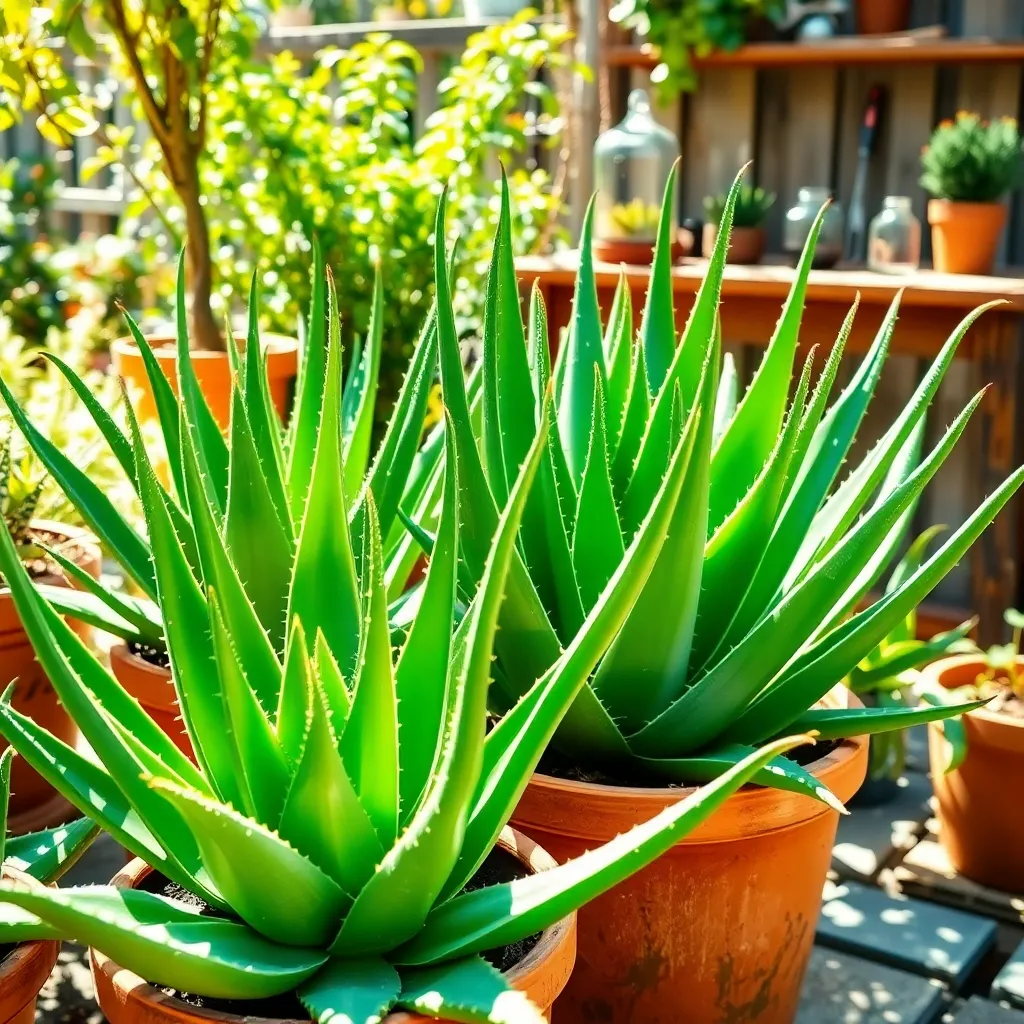
Recognized for its healing properties, Aloe Vera is not just a medicinal marvel but also a resilient succulent ideal for home gardens. Its thick, fleshy leaves store water, making it extremely drought-resistant and perfect for beginners who may occasionally forget to water.
To ensure your Aloe Vera thrives, place it in a bright location with indirect sunlight, as direct sunlight can scorch the leaves. Use a well-draining cactus or succulent potting mix to prevent root rot, an issue common in overly moist conditions.
Water your Aloe Vera plant every two to three weeks, allowing the soil to dry out completely between waterings. In winter months, reduce watering frequency as the plant’s growth slows down.
For more experienced gardeners, consider propagating Aloe Vera by carefully removing healthy offsets from the base of the plant. Let the offsets dry for a day or two before planting them in fresh soil to encourage root development.
Echeveria Elegance for Beginners
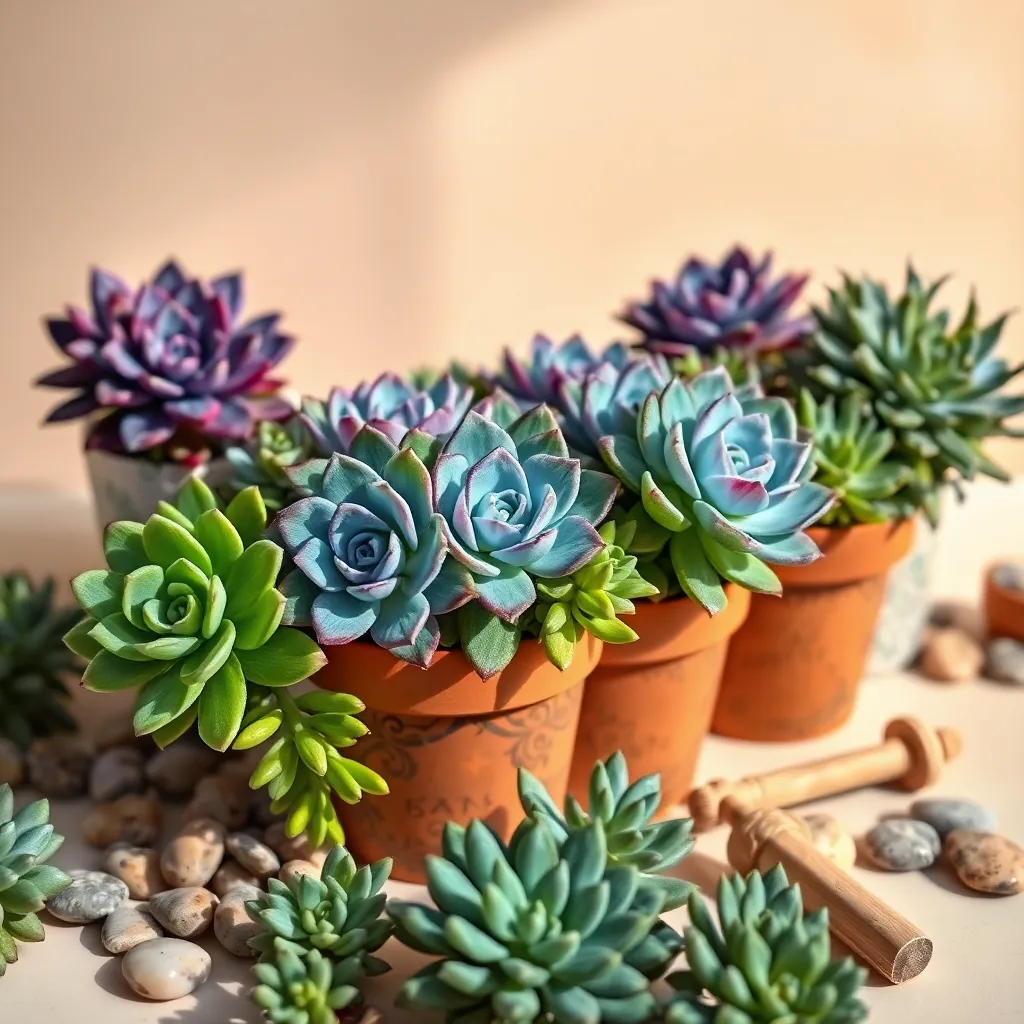
Echeveria Elegance is a stunning succulent that’s perfect for beginners due to its easy-going nature and low maintenance needs. These rosette-shaped beauties thrive best in bright, indirect light, making them ideal for a sunny windowsill or a well-lit room.
Ensure that the soil is well-draining to prevent root rot, which is a common issue with succulents. A cactus or succulent mix works well, but you can also create your own by mixing equal parts potting soil, coarse sand, and perlite.
Watering is crucial, yet straightforward for Echeveria Elegance: allow the soil to dry out completely between waterings. During the growing season, typically spring and summer, water them thoroughly once every two weeks, reducing frequency in the cooler months.
For those looking to encourage more robust growth, consider fertilizing your Echeveria with a diluted, balanced succulent fertilizer during the growing season. Be cautious not to over-fertilize, as this can lead to stretched and unhealthy growth.
Sedum: Versatile Ground Cover
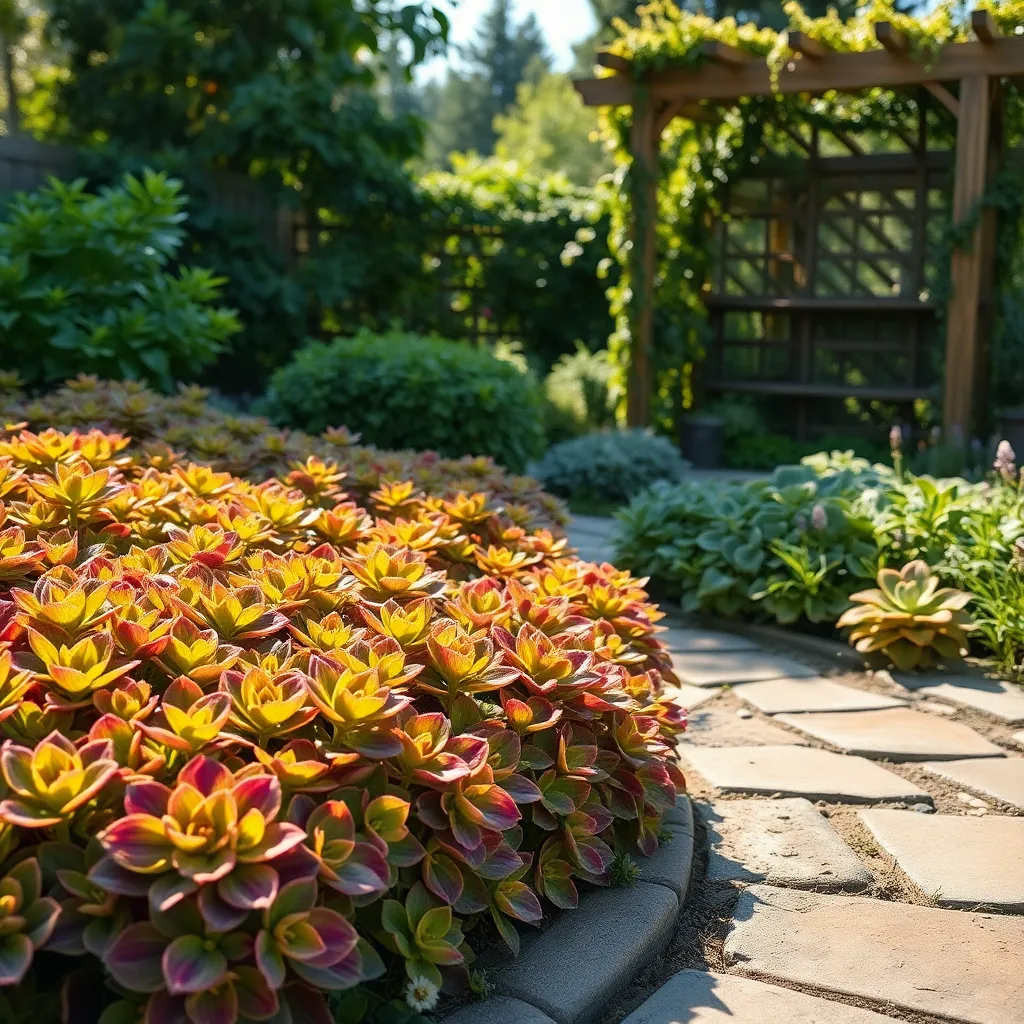
For those seeking a versatile ground cover, Sedum is an excellent choice due to its resilience and aesthetic appeal. These hardy succulents thrive in various climates, making them perfect for gardeners of all experience levels.
Sedum prefers well-draining soil, such as a sandy or gravelly mix, which helps prevent root rot. Ensure the soil is slightly acidic to neutral, with a pH between 6.0 and 7.5, to promote healthy growth.
Watering Sedum is simple; it’s best to let the soil dry out completely between waterings to mimic its natural environment. In the growing season, typically spring and summer, water moderately, but reduce frequency significantly in fall and winter.
To encourage a denser coverage, ensure your Sedum receives plenty of sunlight, ideally 6 to 8 hours of direct sun daily. However, these adaptable plants can also tolerate partial shade, which can be useful in hotter climates.
- Fertilize sparingly—once in spring with a balanced, slow-release fertilizer is sufficient.
- Prune in early spring to remove dead growth and shape the plant.
- Consider dividing mature clumps every few years to maintain vigor and spread coverage.
For those looking to experiment, try mixing different Sedum varieties to create a tapestry of colors and textures in your garden. This approach not only enhances visual interest but also ensures a robust ground cover.
Haworthia: Low-Light Survivor
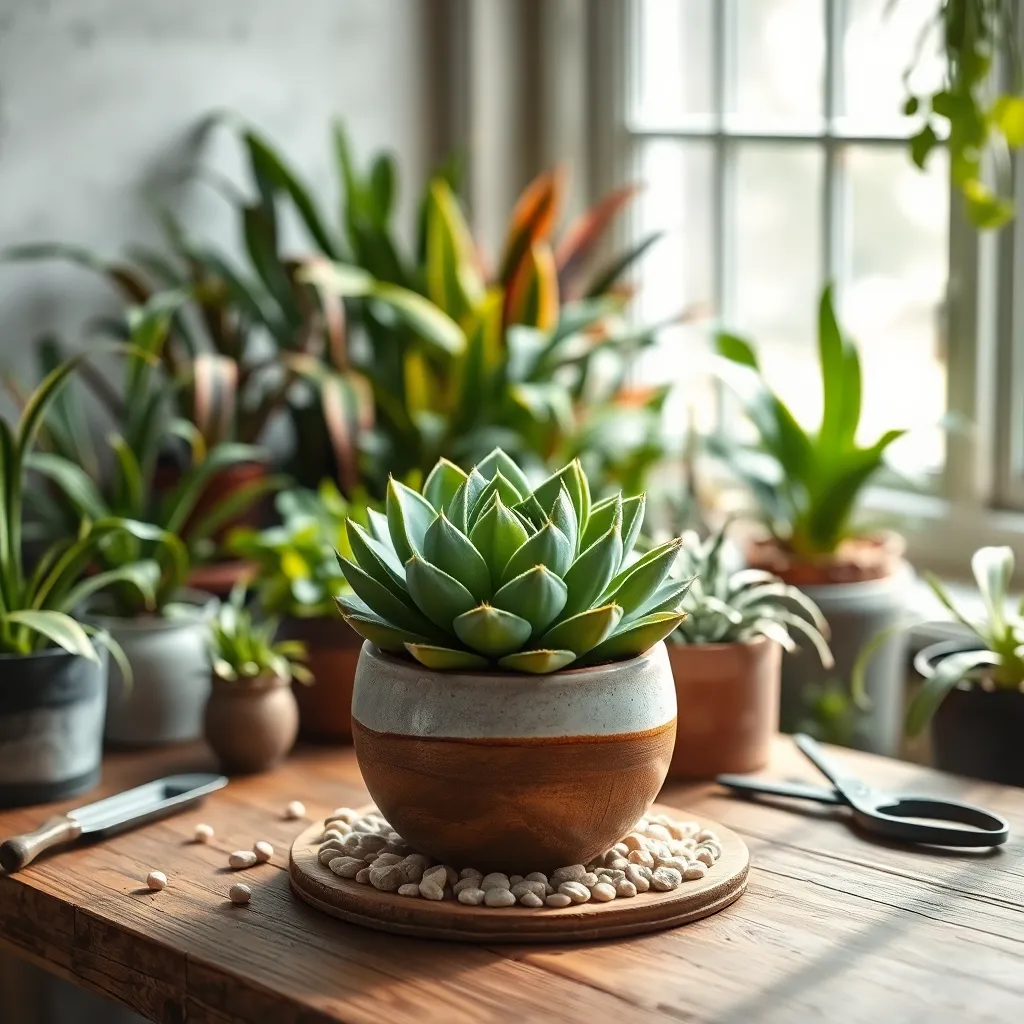
Haworthia is a resilient succulent that thrives in low-light conditions, making it perfect for indoor spaces with limited sunlight. Its ability to tolerate shade allows it to flourish in areas where other succulents may struggle.
When it comes to soil, ensure your Haworthia is planted in a well-draining cactus mix to prevent root rot. Adding a layer of gravel or small stones at the bottom of the pot can further enhance drainage.
Water your Haworthia sparingly, typically every two to three weeks, allowing the soil to dry out completely between waterings. Overwatering is a common mistake, so it’s important to err on the side of underwatering.
For those looking to propagate, Haworthia offsets can be easily separated from the parent plant. Simply wait until the offsets have developed a few roots of their own before gently detaching and replanting them in individual pots.
Jade Plant: Prosperous Charm
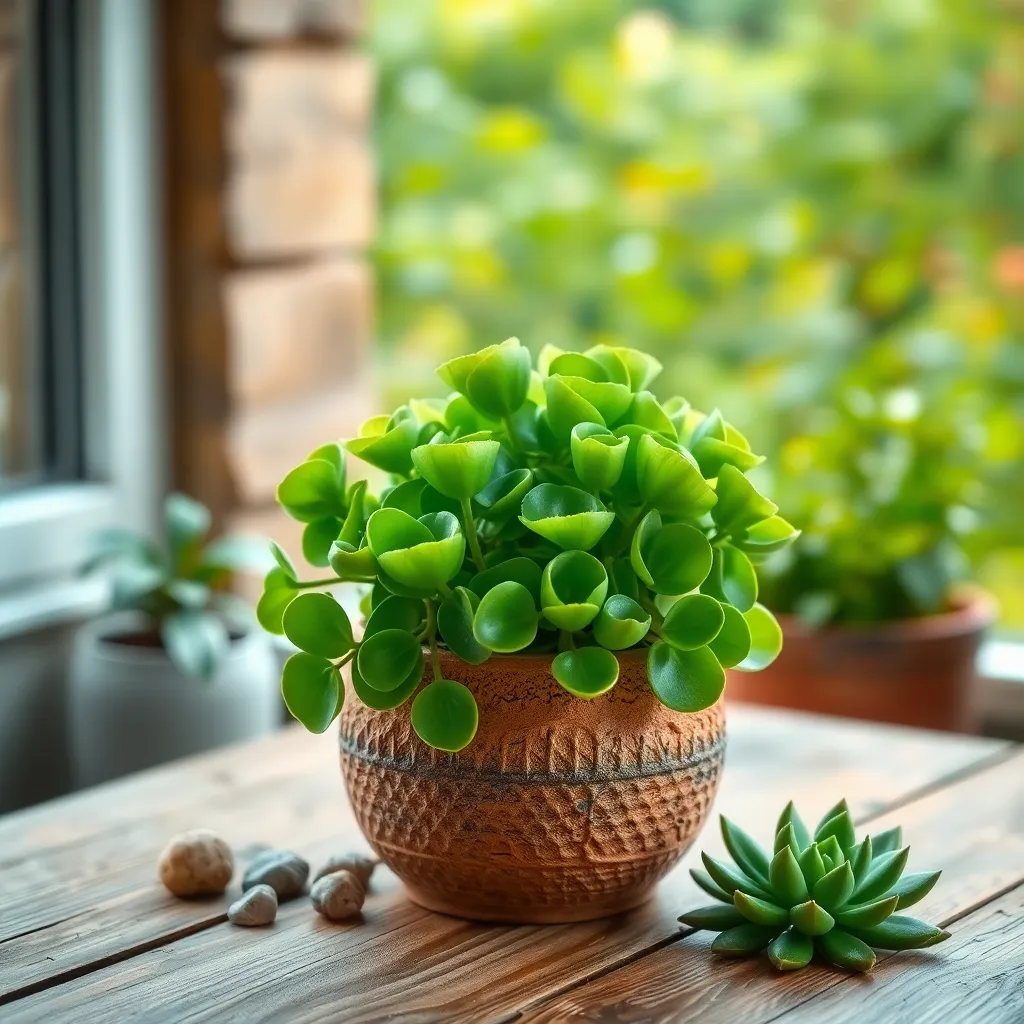
The jade plant, often celebrated as a symbol of prosperity and good fortune, is a delightful addition to any home garden. Known for its thick, fleshy leaves and tree-like structure, this succulent is both appealing and easy to care for.
To ensure a jade plant thrives, place it in a location that receives bright, indirect sunlight. Direct sunlight can scorch its leaves, so a spot near a south-facing window is ideal for balanced growth.
Watering is a crucial part of jade plant care, but overwatering is a common mistake. Allow the top inch of soil to dry out completely between waterings, and use a pot with drainage holes to prevent root rot.
For optimal growth, use a well-draining soil mix specifically designed for succulents. Add perlite or sand to standard potting soil to enhance drainage, which is vital for preventing waterlogged roots.
Advanced gardeners might consider propagating jade plants from leaf cuttings to expand their collection. Simply remove a healthy leaf, let it dry for a few days, and plant it in a sandy soil mix to encourage new roots.
String of Pearls: Unique Trailing
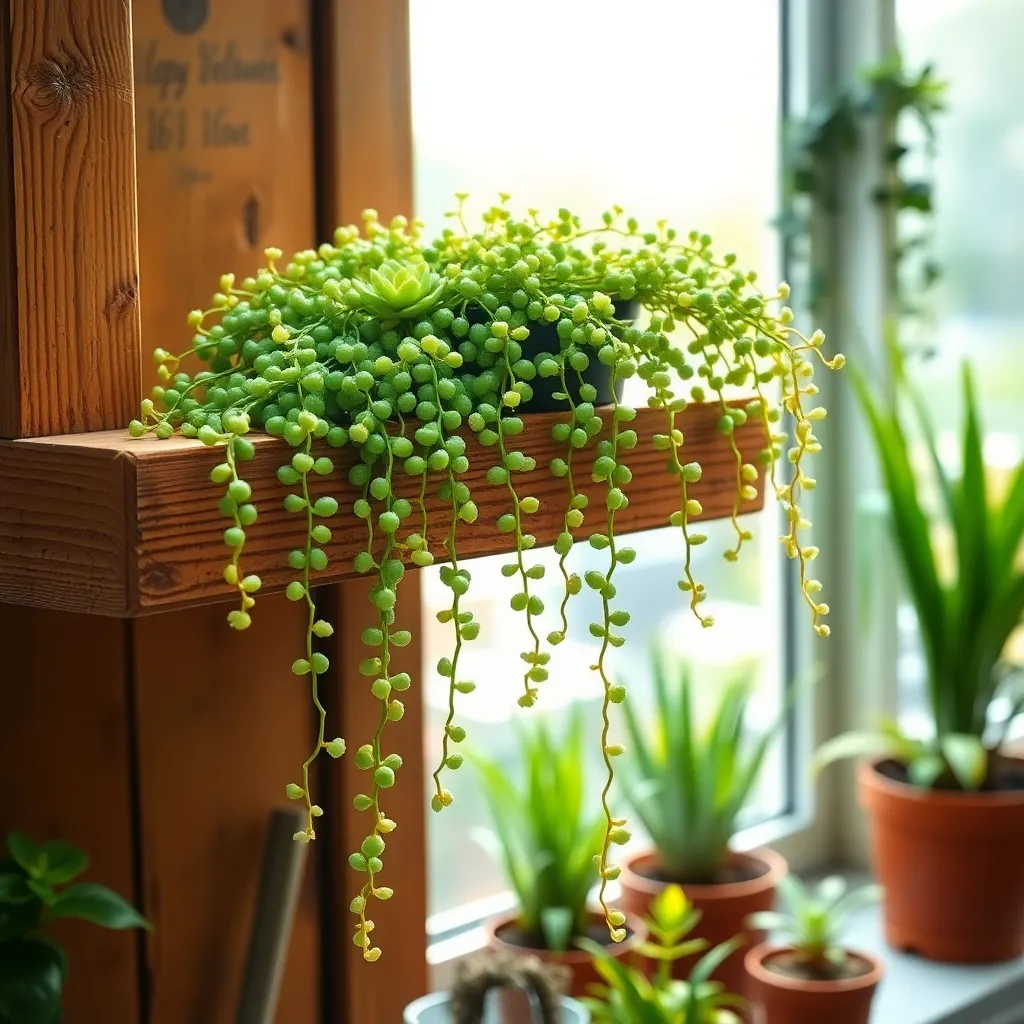
String of Pearls is a visually striking succulent that adds a unique trailing effect to any indoor garden. This plant is ideal for hanging baskets where its bead-like leaves can cascade beautifully.
For optimal growth, place your String of Pearls in a spot that receives bright, indirect sunlight. Too much direct sun can scorch the leaves, so a location with filtered light is preferable.
Watering this succulent requires a careful balance; allow the soil to dry out completely between waterings. Overwatering is a common problem, so opt for a well-draining potting mix, such as a cactus or succulent blend, to prevent root rot.
Beginners should remember that this plant thrives with neglect rather than constant attention. For advanced tips, consider periodically rotating the pot to ensure even growth and a fuller appearance.
Zebra Plant: Striking Patterns
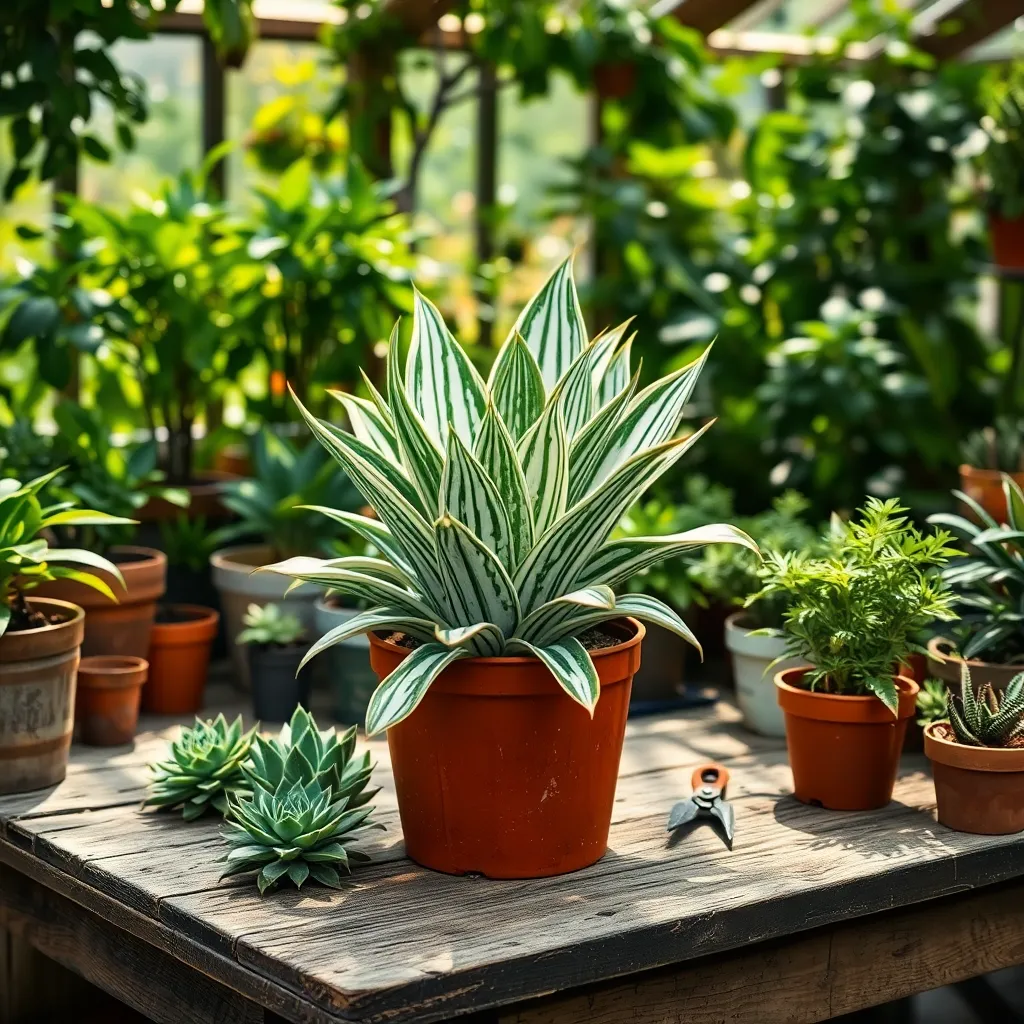
With its bold, contrasting stripes, the Zebra plant (Haworthiopsis fasciata) is a standout addition to any succulent collection. Native to South Africa, this plant is well-suited for indoor environments, making it a perfect choice for those new to succulents.
To ensure your Zebra plant thrives, place it in a spot that receives bright, indirect light. Direct sunlight can scorch its leaves, so a north or east-facing window is often ideal.
When it comes to watering, allow the soil to dry out completely between waterings to prevent root rot. Drench the soil thoroughly when watering, but ensure the pot has excellent drainage to let excess water escape.
For those looking to give their Zebra plant an extra boost, consider using a cactus-specific potting mix that provides good aeration and drainage. Feeding with a diluted cactus fertilizer once a month during the growing season can also promote healthy growth.
Burro’s Tail: Cascading Delight
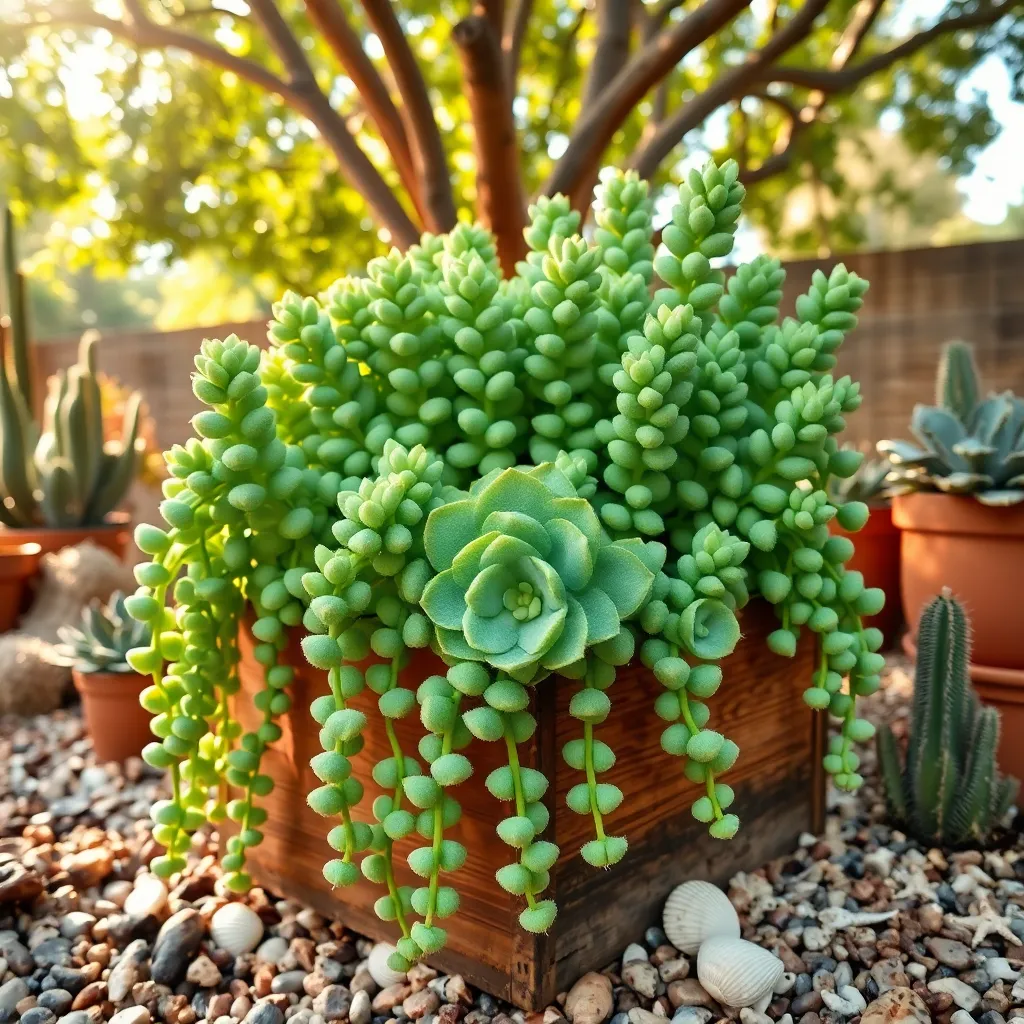
Burro’s Tail, also known as Sedum morganianum, is a delightful trailing succulent perfect for hanging baskets. Its plump, cascading leaves make it a visually appealing addition to any indoor or outdoor space, inviting admiration from all who see it.
To successfully grow Burro’s Tail, ensure it receives plenty of bright, indirect light to maintain its vibrant color and health. Position it near a south or east-facing window, or supplement with grow lights during the darker months to keep it thriving.
Watering Burro’s Tail requires a delicate balance, as too much moisture can lead to root rot. Allow the soil to dry out completely between waterings, and use a well-draining cactus or succulent mix to prevent water retention.
For those looking to propagate, Burro’s Tail is surprisingly simple to multiply. Gently remove individual leaves and lay them on top of moist soil, ensuring they receive adequate light and warmth to encourage root growth.
Cactus Variety: Spiky Wonders
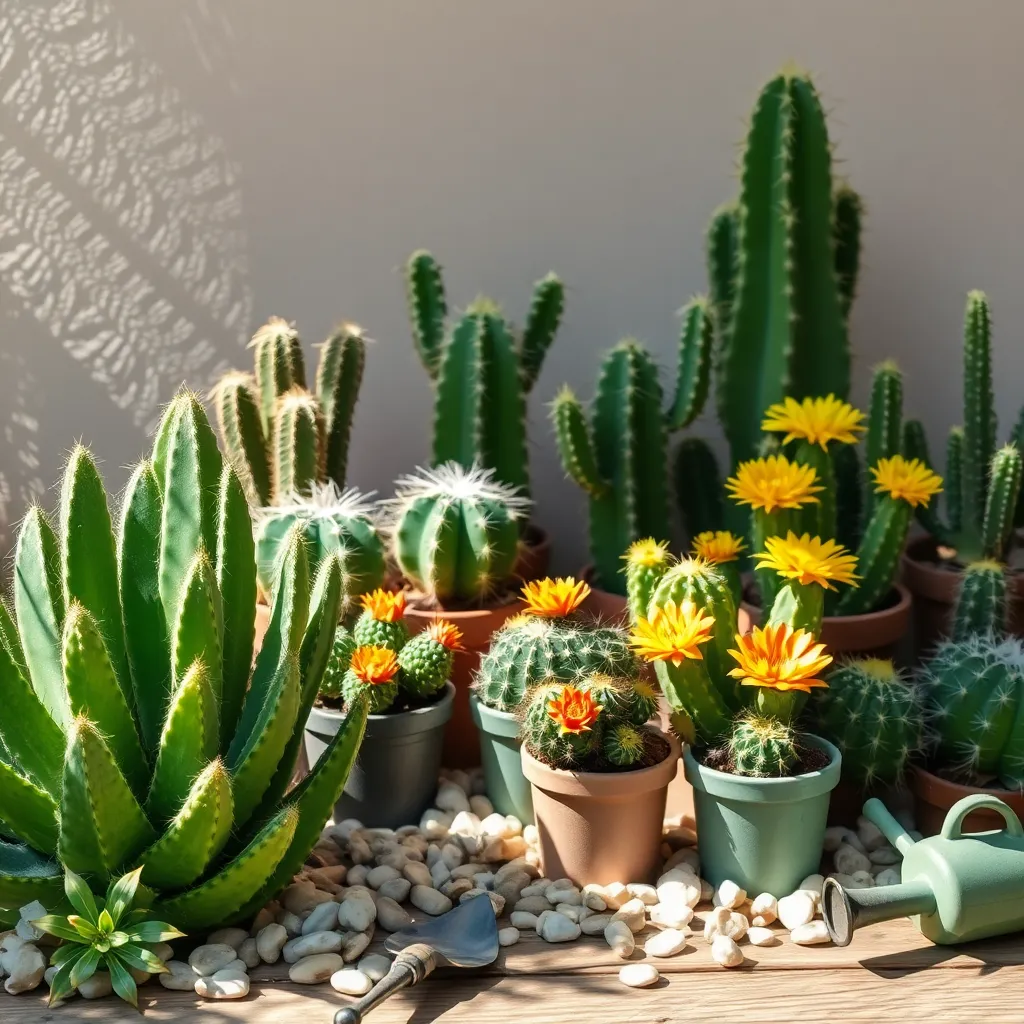
Cacti are fascinating plants known for their unique shapes and minimal care requirements. They thrive in well-draining soil and require bright, indirect light to maintain their bold coloration. For beginners, it’s essential to use a cactus-specific potting mix, which typically contains a blend of sand, perlite, and peat. This mixture ensures proper drainage, preventing root rot, a common issue with overwatering.
When watering cacti, remember that less is more. Allow the soil to dry out completely between waterings, typically every 2-4 weeks, depending on the humidity of your environment. During their growing season in spring and summer, you can feed them monthly with a diluted, balanced liquid fertilizer to support their growth. This step is crucial for those looking to encourage blooming in their cacti varieties.
For those with more experience, consider experimenting with different cactus varieties, like the tall and striking Saguaro or the smaller, colorful Echinopsis. Each variety offers a unique visual appeal, perfect for adding diversity to your indoor plant collection. Ensure you provide ample space for larger species to grow, as they can outgrow their pots quickly if conditions are ideal. Remember, the key is patience; cacti are slow growers, but the reward is a stunning, low-maintenance display of spiky wonders.
To propagate cacti, you can use cuttings from healthy plants, allowing them to callous over for a few days before planting. This method is both simple and effective, offering a rewarding way to expand your collection. By following these steps, you can enjoy the fascinating world of cacti right in your home, creating a stunning and resilient garden with minimal effort.
Agave: Architectural Accent
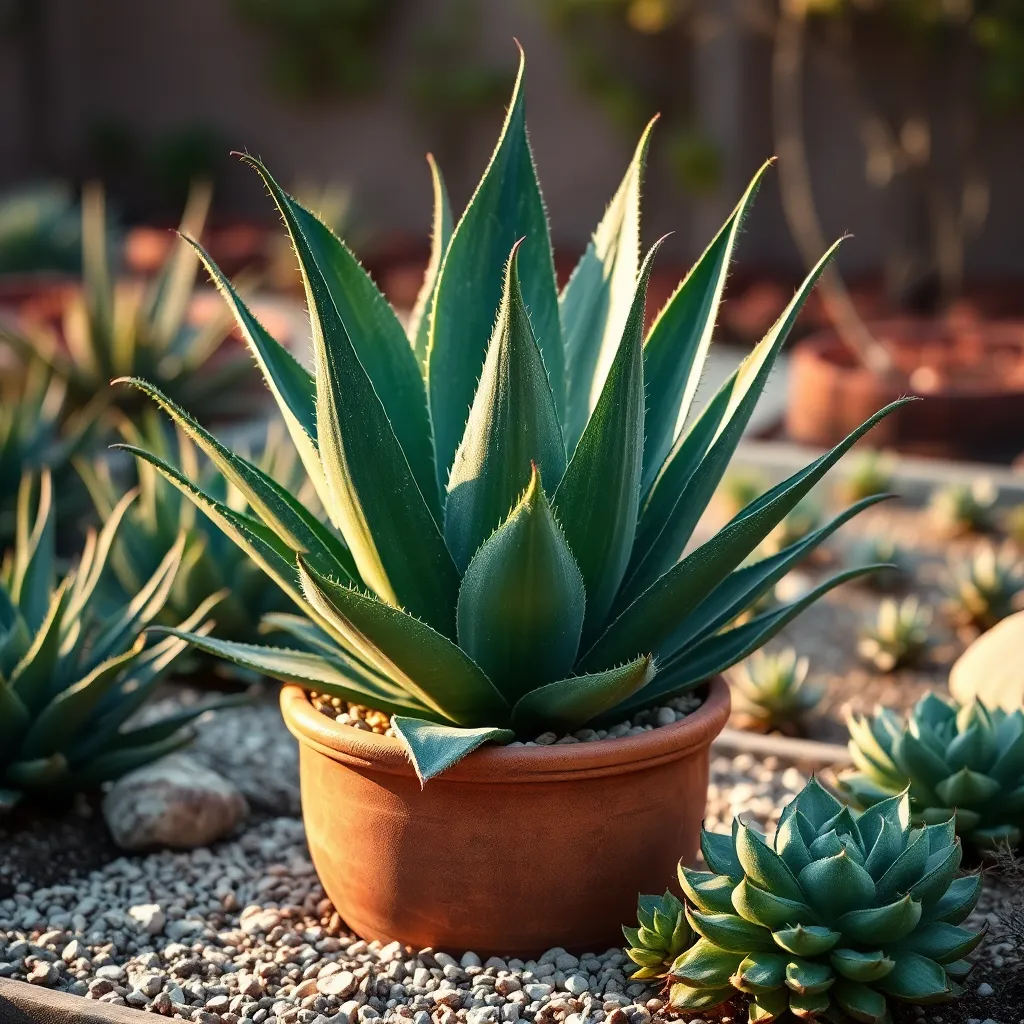
Agave plants are known for their striking, architectural shapes that can transform any garden into a visual masterpiece. These succulents thrive best in well-draining, sandy, or gritty soils to prevent root rot and ensure healthy growth.
Position your agave in a spot where it receives full sun, as this is crucial for its development. If you’re growing them indoors, a bright windowsill or a sunroom is ideal to mimic their natural habitat.
Watering agave requires a careful balance; they prefer to dry out completely between waterings. During the growing season, water deeply but infrequently, allowing the soil to dry completely to avoid overwatering.
For those in cooler climates, consider planting agave in a container to bring it indoors during frosty months. Use a pot with drainage holes and a cactus mix for optimal results, ensuring the plant remains healthy and vibrant through the seasons.
Care Tips for Thriving Succulents
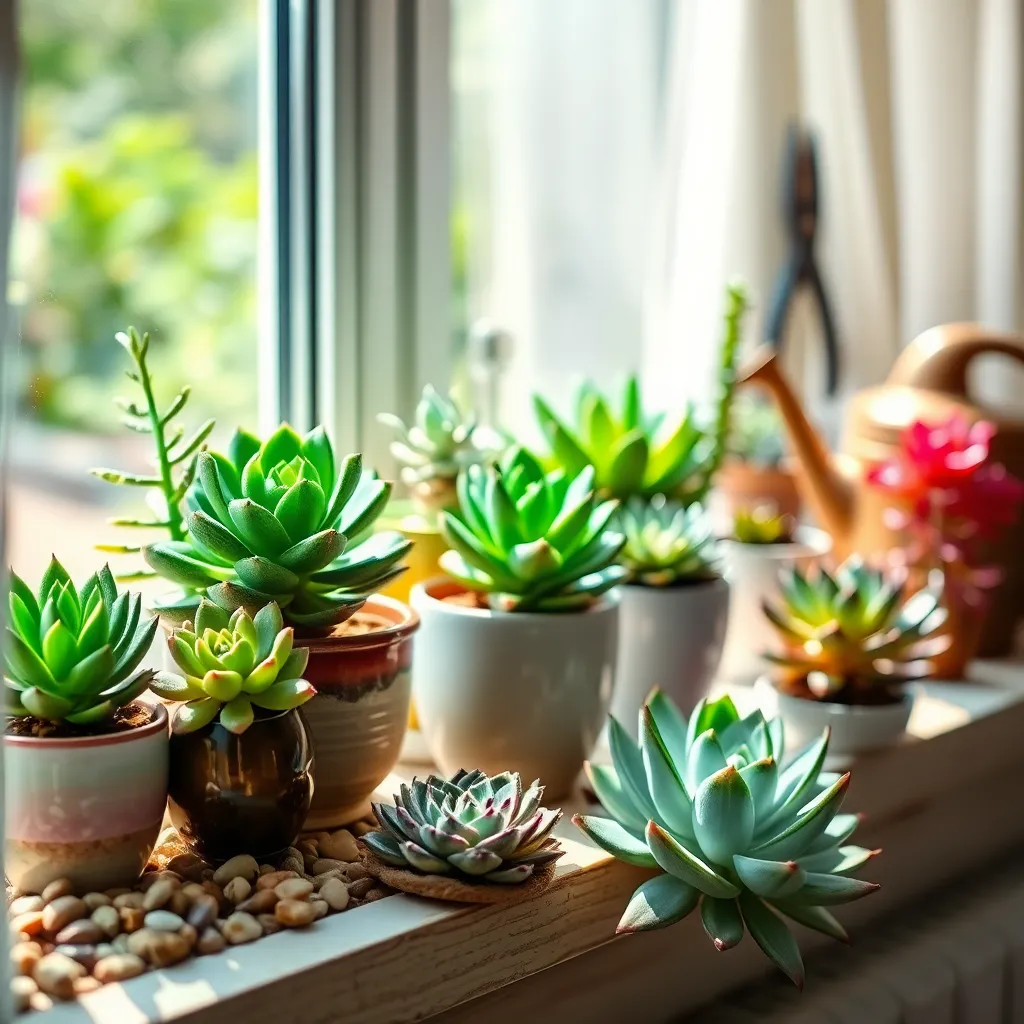
Succulents are renowned for their ability to store water, making them ideal for beginners who may occasionally forget to water their plants. Provide your succulents with bright, indirect light to help them thrive, as too much direct sunlight can cause leaf burn.
It’s important to choose the right soil for your succulents. Opt for a well-draining cactus or succulent mix, which you can find at most garden centers, or make your own by mixing regular potting soil with sand or perlite.
Watering succulents correctly is crucial for their health. Allow the soil to dry completely between waterings, typically every one to two weeks, depending on your home’s humidity and temperature.
For those looking to delve deeper, consider rotating your succulents every few weeks. This encourages even growth and prevents the plants from leaning towards the light source.
To keep succulents looking their best, remove dead or dying leaves regularly. This not only improves their appearance but also prevents pests from making a home among the decaying matter.
If you’re feeling adventurous, try propagating your succulents through leaf cuttings. Simply place a healthy leaf on top of the soil, mist it lightly, and watch as it develops roots and eventually a new plant.
Conclusion: Growing Success with These Plants
In exploring the 12 beautiful succulent varieties to grow at home, we’ve delved into the art of nurturing relationships through patience, resilience, adaptability, and the beauty of diversity. These concepts remind us that relationships, much like succulents, thrive with attention and care. From the steadfast nature of the Aloe Vera to the vibrant allure of the Echeveria, each succulent teaches us a unique lesson about cultivating a thriving, harmonious connection.
As an immediate next step, consider selecting one succulent variety to grow at home, using this as a gentle reminder to nurture your relationships with the same dedication and love. By doing so, you’ll create a living testament to your commitment to growth and resilience in your personal connections.
Don’t forget to bookmark this article for future reference; it will serve as a valuable guide whenever you seek inspiration or guidance on your relationship journey. As you continue to nurture these living symbols of love and patience, you’ll find that your relationships flourish in unexpected and beautiful ways. Remember, the key to a thriving relationship lies in consistent care and the willingness to grow together.

